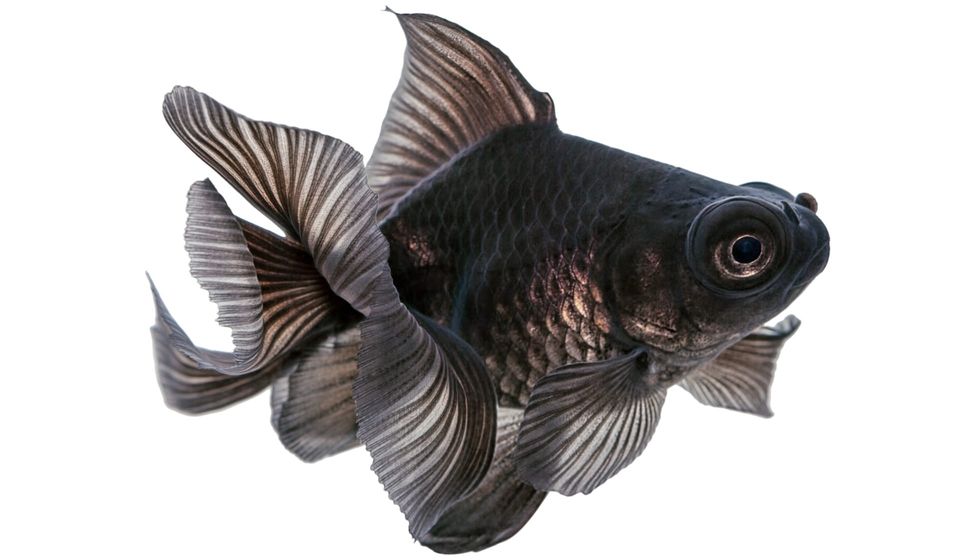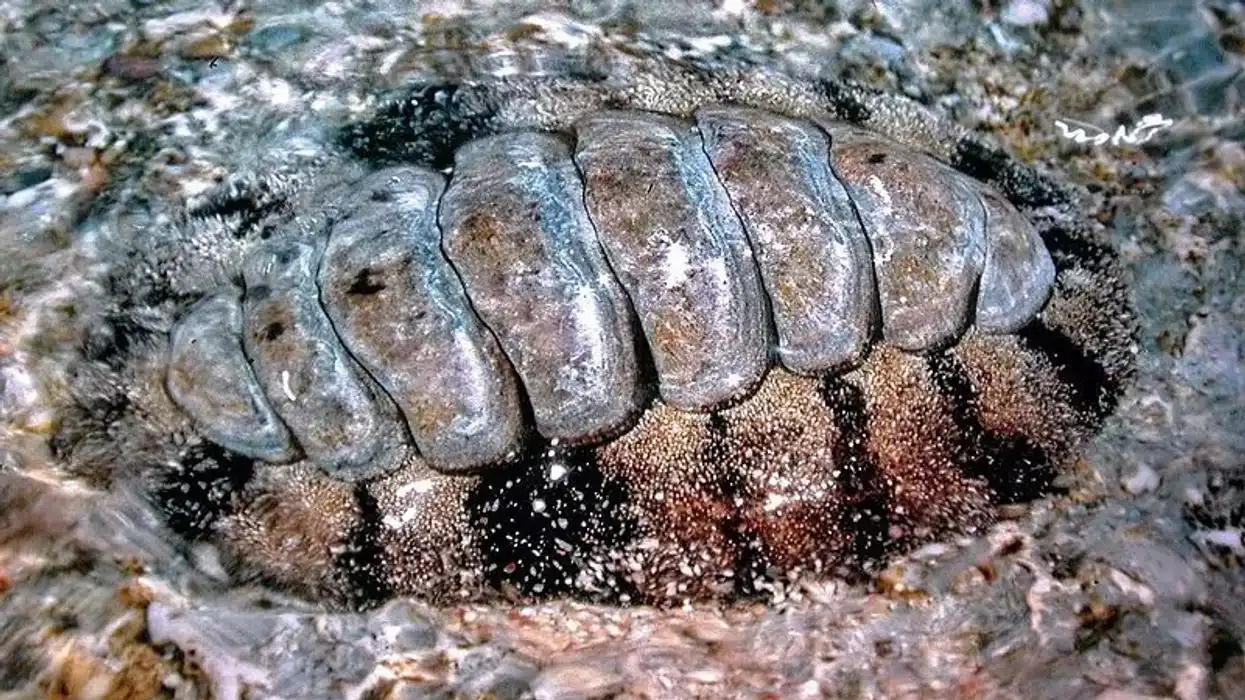Telescope fish (Mendosoma Lineatum), also known as real bastard trumpeters or common trumpeters, are the only species of fish in its genus and there is not much information available about this type of fish.
It is a species of trumpeters that can be found in various parts of the world and ranges from North America, Europe, Asia, and Australia. They are often confused with the telescope goldfish or the telescopefish that can be found in the deep sea, but they are completely different species.
The distribution of this fish is not thoroughly studied yet, but they have been spotted in Chile, New Zealand, Tasmania, Saint Paul, Amsterdam, and Gough Island.
They have a small glass shield around their eyes, making them look different compared to other fish. Telescope fish are found at depths of 66 ft (20m) of the water column.
They are blueish green with a silvery underside and a protruding head. Their eyes are described to look like bubble lenses and they have a set of 22 to 25 dorsal spines.
As they are not caught that often, this species of fish may not be very suitable for a tank environment.
Telescope fish hunt plankton for food and they do not grow over the size of 16 in (40 cm). Most of the information like their lifespan, distribution, appearance variations food habits are not extensively recorded as of now.
Keep reading for more amazing facts about the telescope fish! Also, check out our other articles about redbreast sunfish and lake trout for more interesting facts about fish.
Telescope Fish Interesting Facts
What type of animal is a telescope fish?
The telescope fish is a species of fish most commonly found in the marine waters of southern Chile, New Zealand, and Tasmania.
What class of animal does a telescope fish belong to?
Telescope fish belong to the class of fish from the Mendosoma genus of the Latridae family. They are the only species in their genus, and there is not that much information about them as of now.
How many telescope fish are there in the world?
The current population of telescope fish is not known, and neither is it evaluated yet.
Where does a telescope fish live?
The telescope fish is known to live in the marine oceans of southern Chile, New Zealand, Tasmania, Saint Paul, Amsterdam, and Gough Island. It is also known to be spotted in other parts of the world, although not many of these species have been taken into laboratories for in-depth research.
They are not found with other tank fish in human households.
What is a telescope fish's habitat?
The telescope fish habitat range from sub-Antarctic to cool temperate waters. They can be found in depths of over 66 ft (20 m) within the water column. Telescope fish are also spotted in large low tidal pools and surge channels. As they tend to live in cool waters, a domestic tank system may not be suitable for them.
Who does a telescope fish live with?
Telescope fish are only ever seen together or in groups. They find it easier to hunt prey or plankton when moving in groups. It is also a safe way to ward off predators found in their water environment.
How long does a telescope fish live?
The average lifespan of telescope fish is not known either in the wild or in a domestic tank.
How do they reproduce?
Like all other fish species, telescope fish lay eggs during the breeding season which hatch to become adults. Not much is known about the gestation period, the number of eggs laid, or the sexual behavior of these fish.
What is their conservation status?
The conservation status of telescope fish is Not Evaluated according to the International Union for Conservation of Nature which means there is not enough information about their numbers.
Telescope Fish Fun Facts
What do telescope fish look like?
The telescope fish has a blueish-green body with silvery shades on the underside. This genus may also have small brown lines and blue dotting, forming stripes along the back and sides.
Telescope fish have pointed snouts and tough, slimy scales. They have 22 to 25 dorsal spines, 17 to 21 soft dorsal rays, and three anal spines. Lastly, telescope fish have glass-like eyes that are softly protruding and a shaped tail.

*Please note the main image and this image are of a Black Moor Goldfish that belongs to the same family as the Telescope Fish. If you have an image of a Telescope Fish please let us know at hello@kidadl.com
How cute are they?
Telescope fish have an interesting color combination and do not have an ugly appearance. While they might not be as graceful as the telescope goldfish, they are a little cute with their bead-like eyes.
How do they communicate?
Not much information is available on how telescope fish communicate with one another. Like other species of fish, they are assumed to communicate using vibrations, gestures, motions, and body language. The synchronized swimming of the schools of this genus is a good example of their communicative prowess.
How big is a telescope fish?
The maximum size of the telescope fish is about 16 in (40 cm). They are about three times longer than the telescope goldfish.
How fast can a telescope fish swim?
There are no studies estimating the speed of telescope fish. However, they have been seen to swim together in fast-moving groups.
How much does a telescope fish weigh?
The average weight of the telescope fish genus is not known.
What are the male and female names of the species?
There are no names for male and female telescope fish. A group of telescope fish is called a school.
What would you call a baby telescope fish?
There are no names for juvenile telescope fish. However, other species of baby fish are generally given the name fry or larvae.
What do they eat?
The telescope fish diet includes plankton. They usually go looking for food in groups or schools. Telescope fish usually fall prey to larger carnivore fish species or sharks.
Are they dangerous?
Telescope fish are completely harmless to human beings.
Would they make a good pet?
Telescope fish usually prefer cool temperate oceans which means it would take a lot of effort to make them adjust to a tank. The cost of a temperature-regulating tank can be quite high and the availability of telescope fish is also variable.
Did you know...
Telescope fish feed on plankton and have an extendable mouth that is capable of quickly snatching prey before it escapes.
Why are they called telescope fish?
These fish, just like the telescope goldfish, have a bubble around their eyes. This makes their eyes look like telescope lenses, hence the name.
Do humans eat them?
Humans can eat telescope fish but they can be quite a rare catch.
Here at Kidadl, we have carefully created lots of interesting family-friendly animal facts for everyone to discover! Learn more about some other fish including swai fish, or skate fish.
You can even occupy yourself at home by coloring in one of our telescope fish coloring pages.










